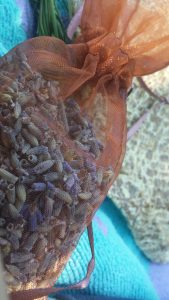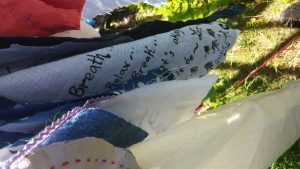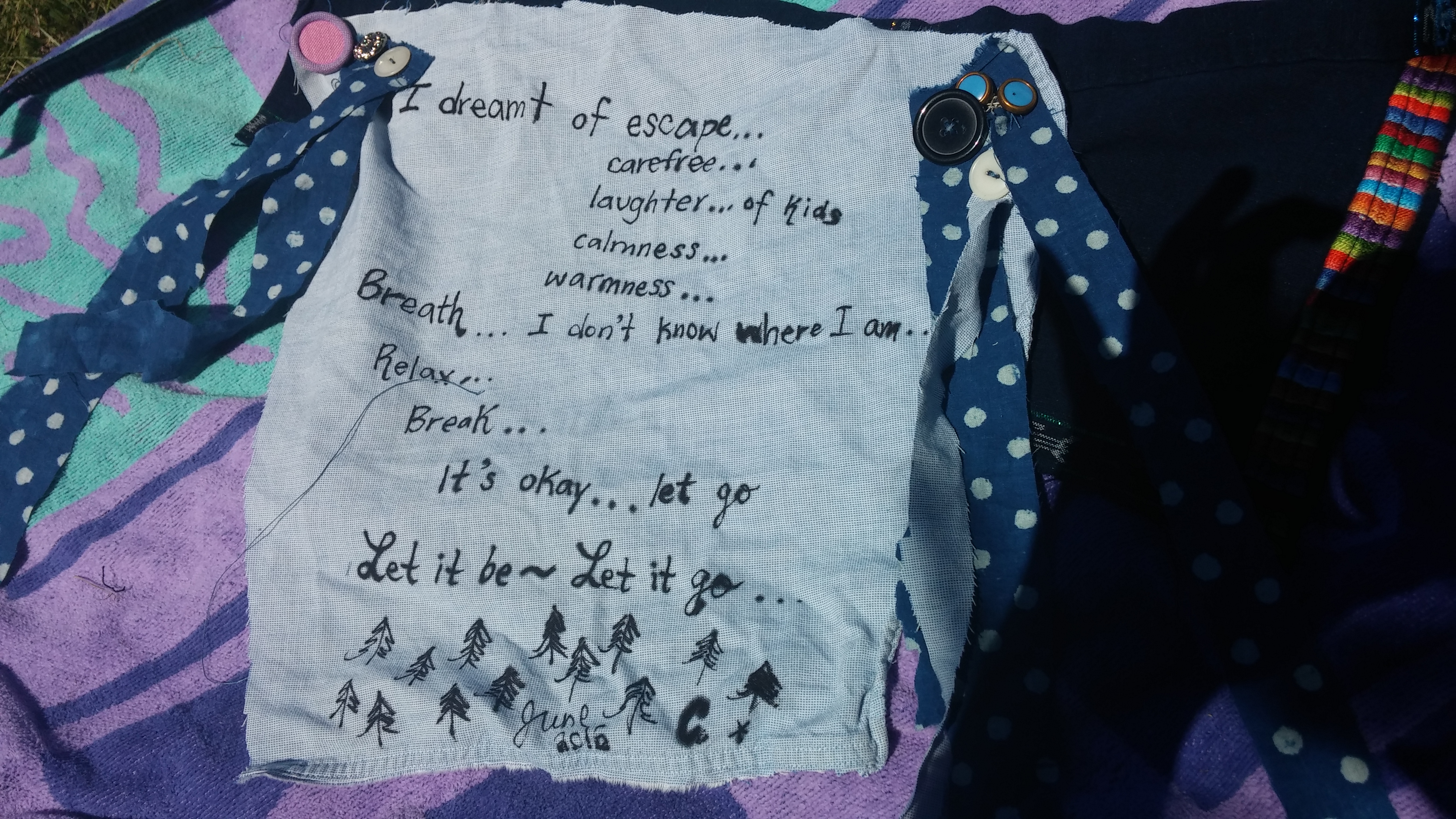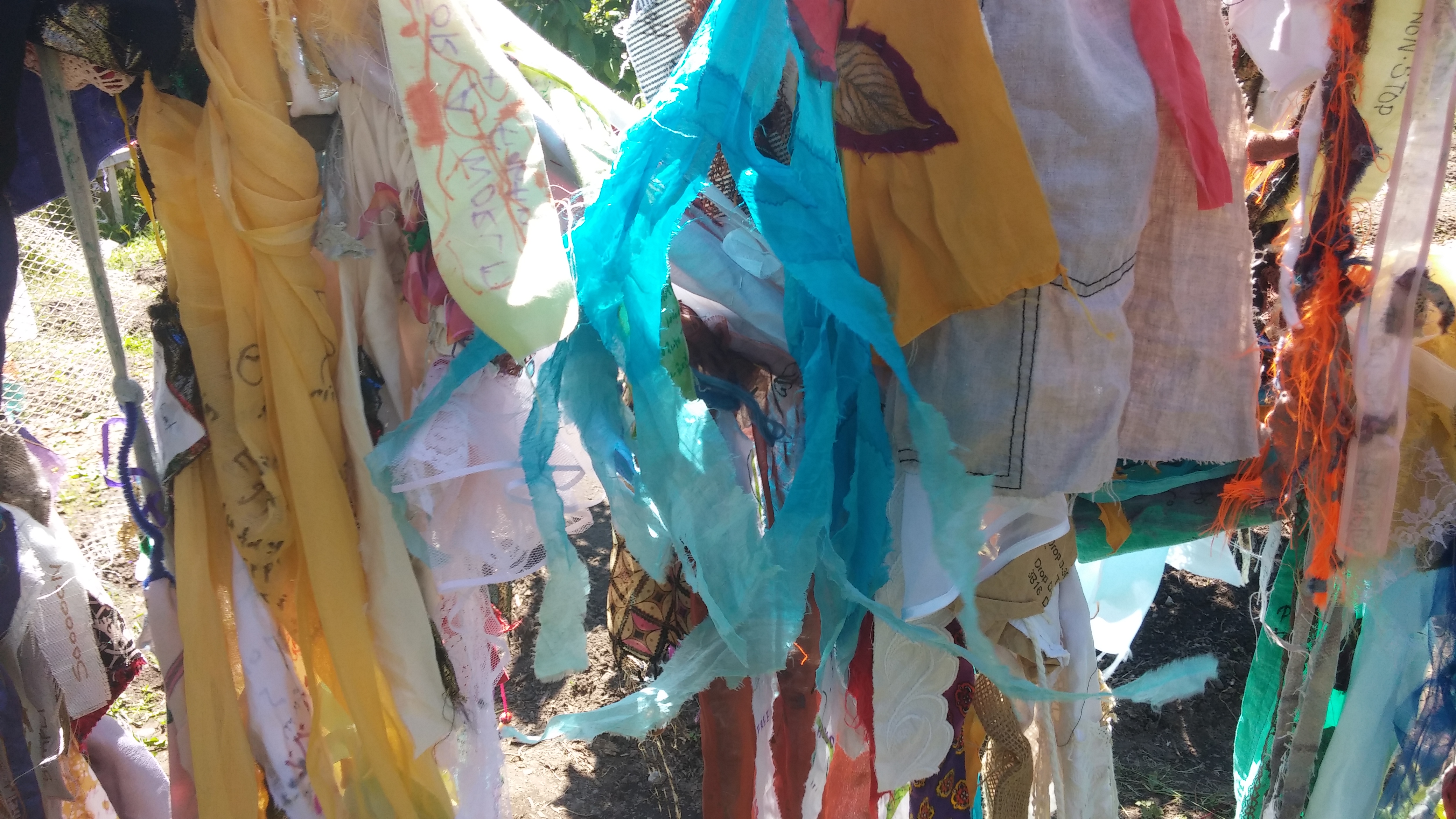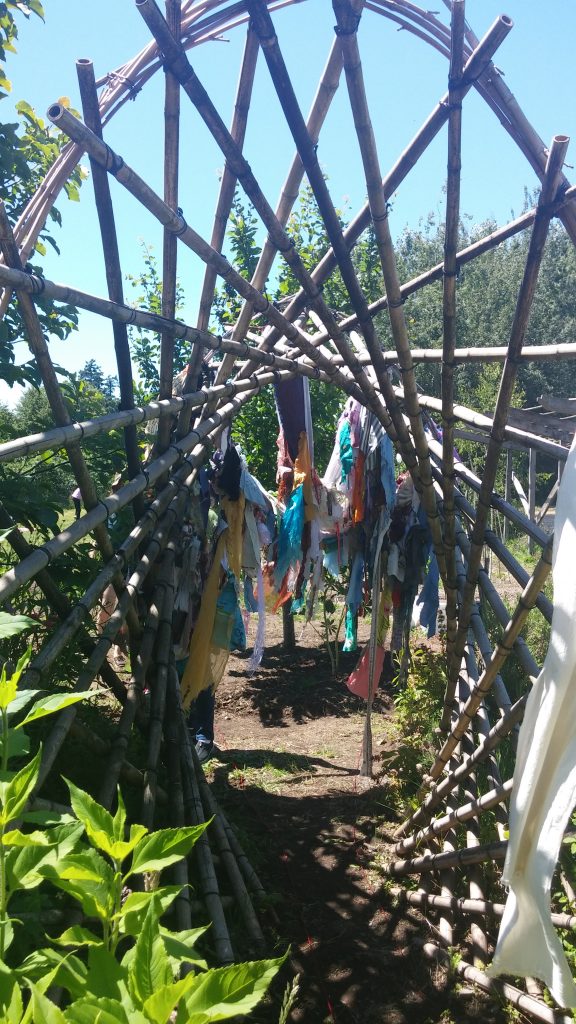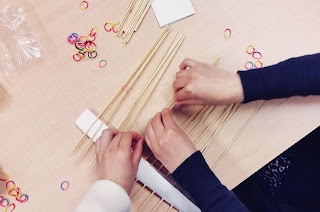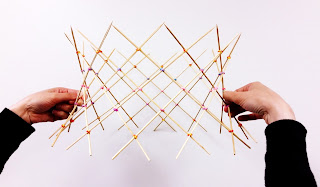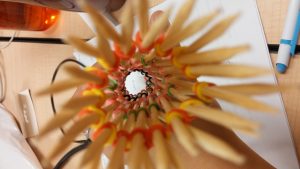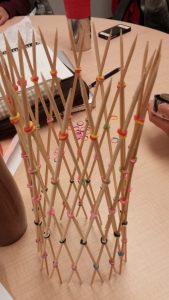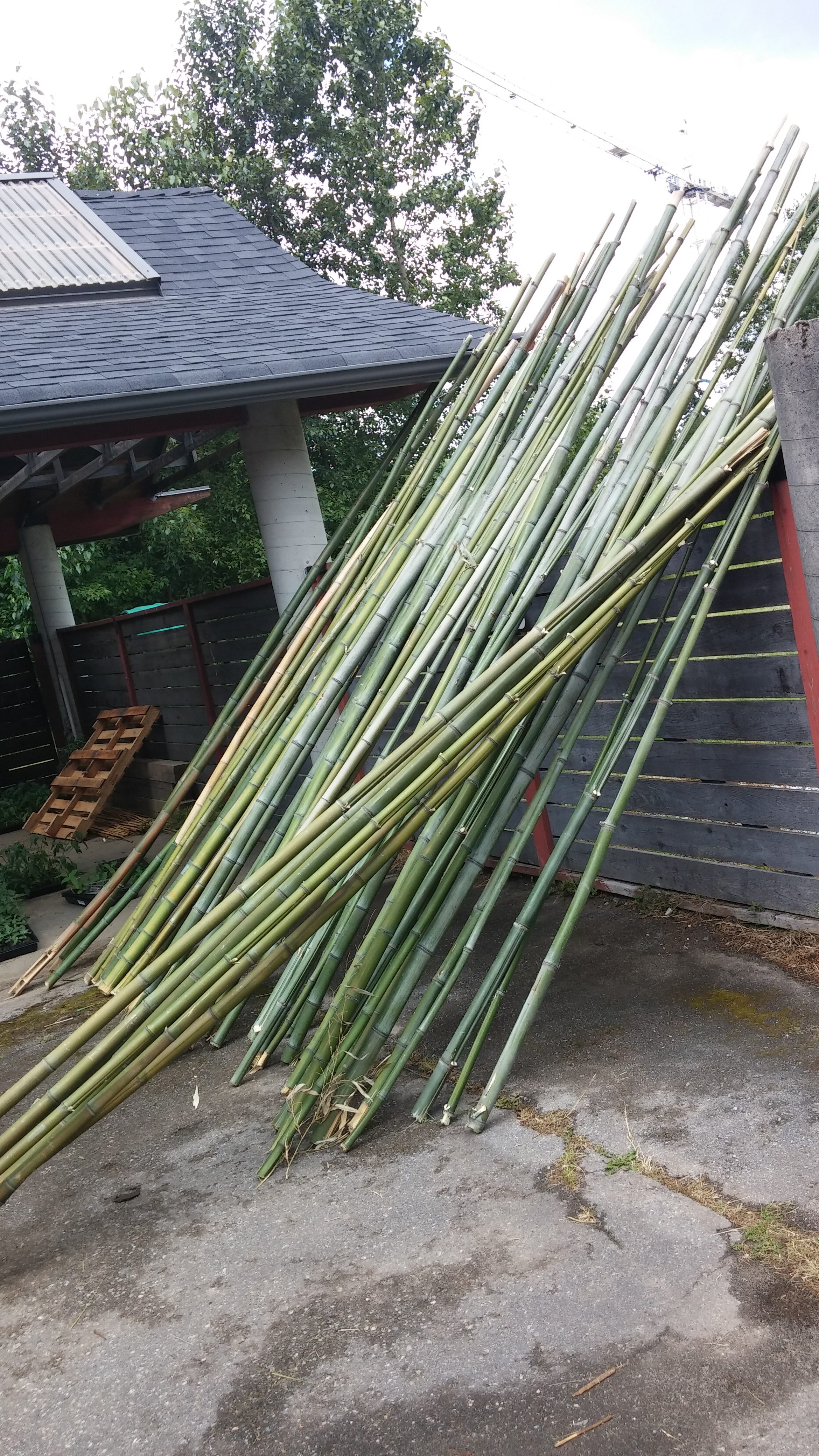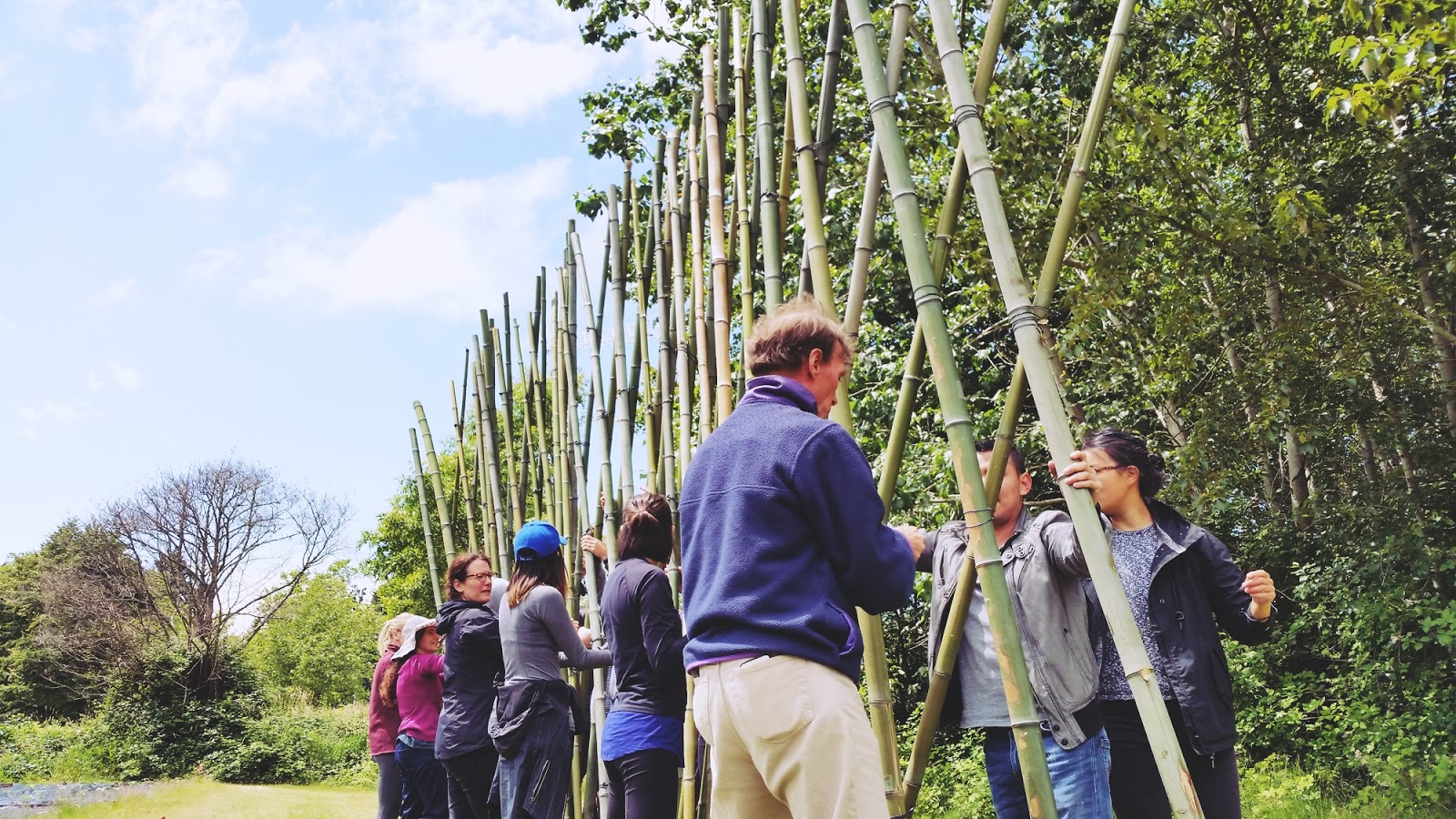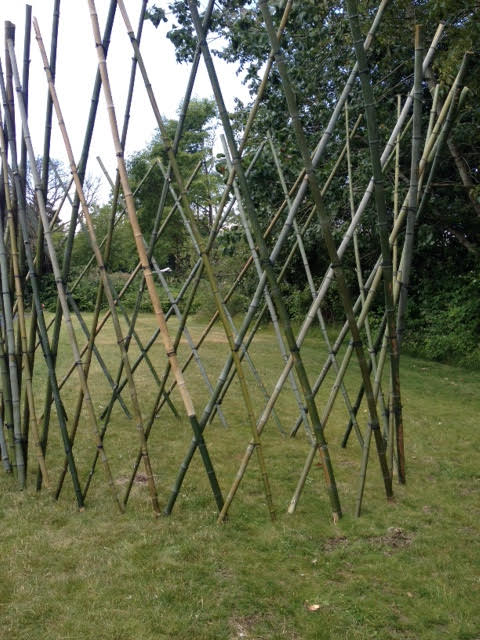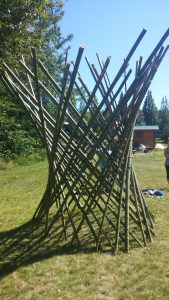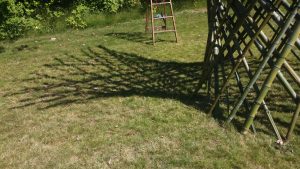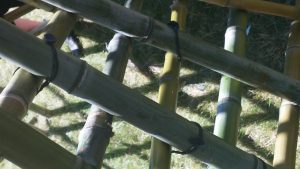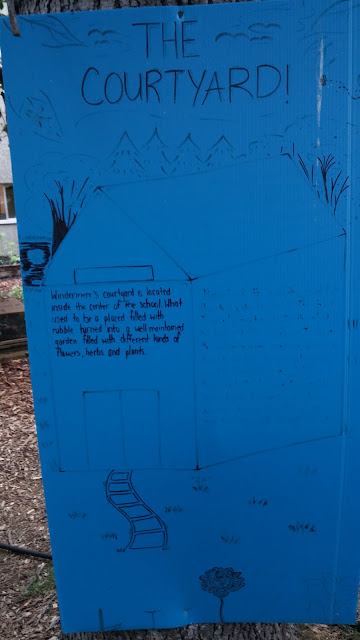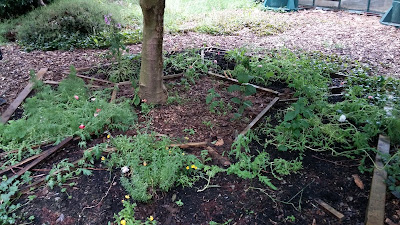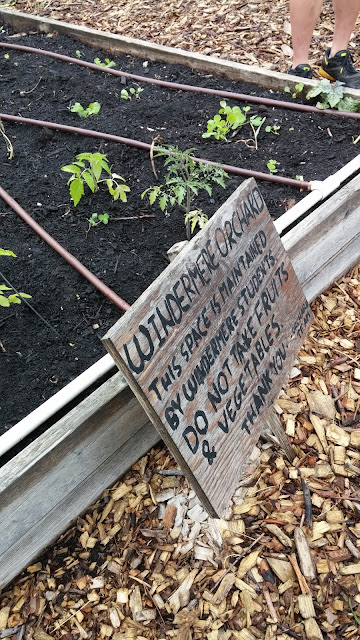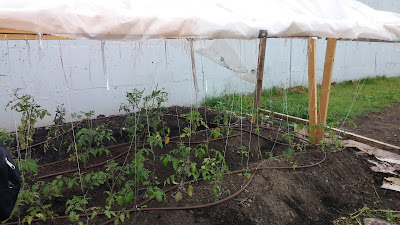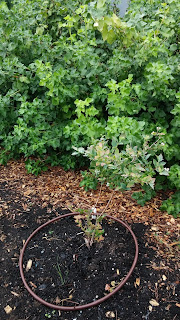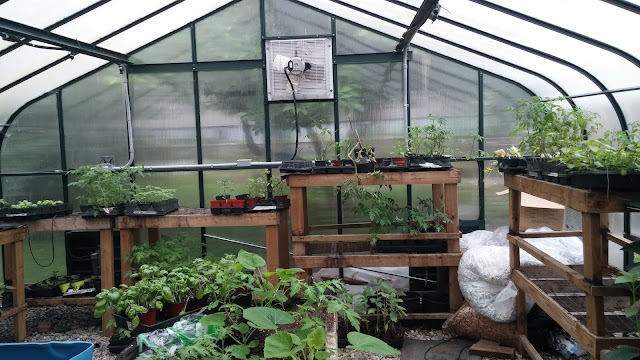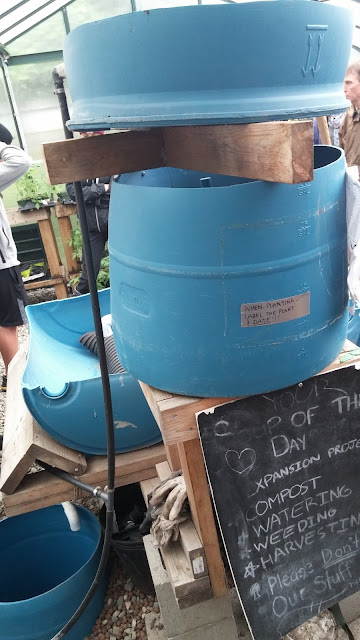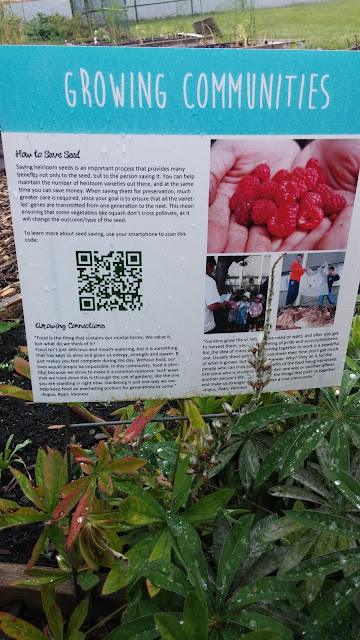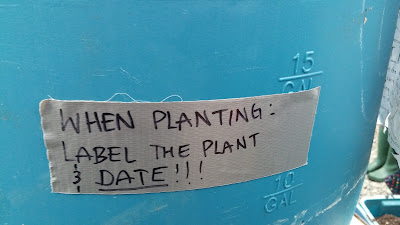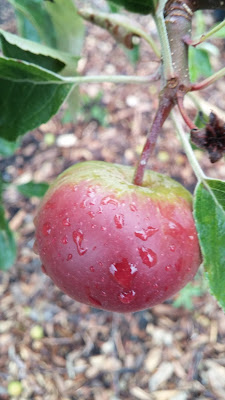Day 10: CFE (June 17th, 2016) SEL Red Flags at CFE! & Dream Inquiry
Lacking SEL Red Flags Yikes!
I have to admit I found the group dynamic today quite interesting and puzzling especially during the attempt of reconstructing the hyperboloid bamboo structure that was in progress since Wednesday. We had a few additional hands today to help build the structure including our CFE FA Jeannine, CFE host Susan, two graduate students, one orchard garden staff in addition to the 13 TCs. It was interesting to see how the group dynamic shifted today from the original whole group team work and eventually splitting into two groups: one that continued to work at the large structure following instruction from the CFE host, and the other group that found the whole construction and strategy problematic eventually resorting to building a small skewer structure experiment. There were only about 3 to 4 out of the 13 TCs that stayed till the end to do the experiential constructing of the large hyperploid structure. I was part of the 3 to 4 TC that continue to push ourselves to help complete the large structure with the Orchard Garden Team. I felt I was lost at times, but I thought if we continue to work on it together as a team, eventually, we will accomplish our task. The rest of the group who is not constructing the large sculpture was focused on experimenting a possible solution/theory on making a small hyperploid with BBQ skewers. It was unfortunate that one TC got injured today as the large bamboo structure collapsed unexpectedly. Hopefully that TC is okay and will recover soon! I feel the injury today could possibly have been prevented if we had assistance from the whole group supporting the structure rather than having the majority of people huddled and focused on the small structure. During a brief moment, Jeannine asked what I thought of everything that is going on with the group from the social emotional learning perspective. I gave it more thought throughout the day, what does this all mean to an educator and their participants? As part of the social emotional learning cohort, the flags of everyone’s swinging mood was flying everywhere! Definitely RED FLAGs. How do we regather people when we have lost most of the group? Should we regather to see what we can do as a group, whether there is a need for a break, revamping of project…etc..? Lack of participation from the majority of the group, and decreasing of enthusiasm was an alarming sign throughout the morning. I understand some of their withdrawal from participating in the large structure was partly due to some feeling their opinion and input was not taken into consideration. As an educator, I feel if this activity was intended to be inquiry based, there should be more hands on exploration and participation from the whole group allowing the team to figure out the answer collectively on their own as opposed to direct instructing. Perhaps, as part of the math inquiry, they may also be given opportunities to build different 3 D shapes with the give material, that way, they have more ownership of their creation. We are adults in this situation, and we held out pretty good, imagine if this activity was given to our students, how would they be able to handle this scenario? I feel group huddling, discussion, taking different ideas into consideration will be beneficial to rigorous group work such as constructing a big model such as the hyperboloid. Breaks and regrouping of discussion is essentially to ensure everyone’s engagement level. The bottom most important thing I felt that contributed to the withdrawal of participation was the lack of team relationship building today. If team rapport was established with the host, and clear goal and expectation were set earlier on, I feel the team would be more willing to actively participate. The lack of establishing rapport can result in some to resist cooperation. Some may display their cooperation externally and verbally, and some may discreetly do so by withdrawing from activities. This is something we need to take into mind as we walk into different classrooms with different group dynamics.
After an introduction from the lovely Gestare Art Collective and a lunch break, we came back to begin our nap-in! The nap-in was a wonderful break from the more labour-intensive morning we experienced today! It gave us an opportunity to engage in reflective practice, by taking moments in the day to pause and step away from the hectic daily routines that most of us experience.
On to a more positive note, I really enjoyed the Nap-in Dream Inquiry activity today. I was worried that I might not be able to fall asleep to the degree of accomplishing our given task of weaving our dream piece. To my surprise, I was in the middle of reality and dream by the time we were asked to wake up. The following is the piece I created after the nap. I feel my dream piece was a representation more about my state of being of needing space and time to relax. It was really calming doing the sewing, the last time I touched fabric or needles was probably grade 8 textiles. I think this is a great activity for any age level from elementary to adulthood. I know that for kindergartners we can use plastic needles and it is injury-proof. By exposing students to hands on textile art at an early age, it can allow them to have opportunities to work not only on their fine motor skills, but their sense of boundless creativity and acquire a sense and appreciation for aesthetics.
DIY Dream Herb: Mugwort & Lavender (nap-in aid)
